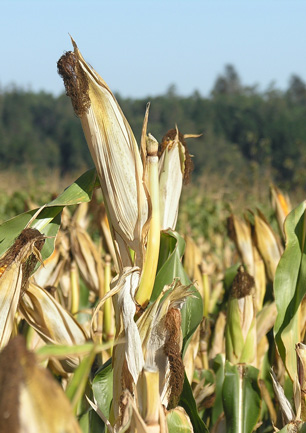Ammonia

Ammonia is commonly used to fertilize corn and wheat crops.
Ammonia is a natural product of the decay of organic proteins. It's widely used in industry and agriculture, and an important chemical in plant, animal, and human biology.
Ammonia gets into water supplies most frequently as runoff in agricultural areas where it is applied as fertilizer and it easily finds its way into underground aquifers from animal feedlot runoff. Ammonia itself is not often found in well water because bacteria in the soil convert it to nitrates.
While large amounts can be hazardous and caustic, it is not currently regulated by drinking water standards.
Effects of Ammonia
-
Corrosive to some copper plumbing systems.
-
Toxic to fish and to dialysis patients. Toxicity varies with the pH of the water.
-
Irritant to the respiratory tract.
-
Studies have so far shown no long-term health effects.
Water Treatment for Ammonia
Ammonia is difficult to remove from water. It can be removed by cation exchange resin in the hydrogen form, which requires use of acid as a regenerant. Degasification can also be effective. Neither of these methods is easily adapted to residential use.
Distillation is an effective treatment for drinking water. It can be also be destroyed chemically by chlorination, but the resulting product is chloramine, which is also difficult to deal with.
According to the WQA Technical Application Bulletin for Ammonia, it can be effectively and economically reduced in public and private water supplies by zeolite ion exchange regenerated with salt.
Photo Source:WikiMedia, author: Luis Miguel Bugallo Sánchez
Site Index
Filtration Systems
- Aeration for Iron & Sulfide
- Backwashing Filters
(whole house & well units)
- Chlorine & Chemical Injectors
- Countertop Water Filters
- Emergency Filters
- Garden Hose Filters
- Reverse Osmosis, Residential
- Reverse Osmosis, Commercial
- Shower Filters
- Specialty Filters
- Ultraviolet Systems
- Undersink Filters
- Water Softeners
- Whole House Filters
Cartridges
Parts
- Replacement Parts
- Faucets
- Filter Media
- Fittings
- Housings
- O-rings
- Pumps
- Pura UV
- R.O. Parts
- R.O. Tanks
- R.O. Booster Pump
- VIQUA UV